French Rafale M fighters will make an unusual addition to the flight deck of the USS George H. W. Bush as France looks to boost military cooperation with the United States.
Approximately 350 sailors and pilots will make up the French contingent on board the Nimitz class carrier, consisting of personnel across the full spectrum of carrier aviation operations; aircrew, maintenance technicians, flight deck crew and operations officers. Both Rafale M fighters and E-2C Hawkeye airborne early warning aircraft from French Naval Aviation will be embarked and flown from the vessel.
The French Navy has been without an operational carrier since 2015 when the Charles de Gaulle entered a major maintenance period after several operational deployments to the Middle East. The French flagship is now scheduled to re-join the fleet in the late spring and the deployment on-board the American carrier will make sure her aircrew are ready to bring her back into service.
In addition to re-certifying their pilots in carrier operations and conducting cross deck familiarisation training before their own carrier is back online, the French Navy will be taking the opportunity to promote even closer working relationships with their American counterparts.
“We want to demonstrate our ability to integrate with US military services”, Captain Jean-Emmanuel Roux de Luze, the French Naval Attache to the United States, told USNI News.
The deployment will begin at Naval Ai Station Oceana, in Virginia Beach where the French personnel will familiarise themselves with the US Navy’s operating environment and systems to make sure they are ready for the pressures of working together at sea.
The deployment was first announced in December following talks in Paris between the American Chief of Naval Operations, Admiral John Richardson, and the French Navy Chief of Staff, Admiral Chrisophe Prazuck. Relations between the United States and France, particularly in the field of defence, have warmed significantly in recent years since the Sarkozy presidency. With this latest announcement it appears that trend will continue between the Macron and Trump administrations.


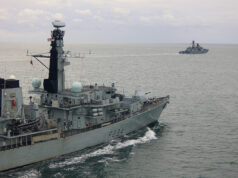
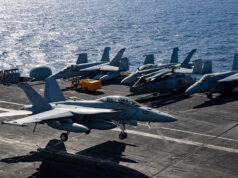

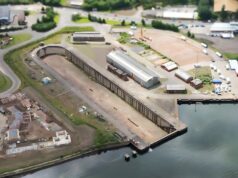
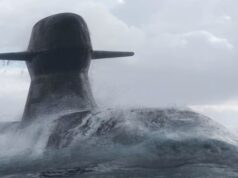


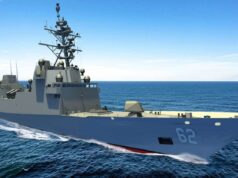
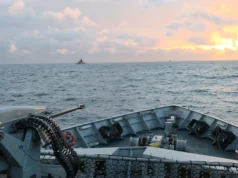


Three years is a long time to go without training for carrier operations, I’m surprised they where not seconded out long before now. I take they have some sort of carrier training facility on land somewhere.
Bien sûr, les bases aéronavales nautiques (Ban de Lanvėoc le Poulnic ou Ban de Hyeres..) sont utilisées pour faire face aux problème de la maintenance du Porte avions Charles de Gaulle. Mais pour l’appontage rien ne peux remplacer un P.A. Cordialement
I wouldn’t be at all surprised if we see a news article stating Russia and China conducting joint carrier Ops sometime in the future, using a one of the Chinese carriers. After the debacle that the Russian Navy presented to the World, when deployed just off the Syrian coast. For a publicity coup, they put in to service a clapped out carrier and in doing so lost two aircraft in the process. Their deployment seriously highlighted how important it is to carry out every day and long term maintenance on their flagship; but also how critical it is to maintain personnel training be it the ship’s crew or the embarked aircrew and ground-crew. Working on a carrier is one of the most demanding and dangerous jobs in the military. You must continually maintain situation awareness when working on deck, or you will get hurt!
The French have also realised this, it is only the US Navy who can really help in this role, as our QE is not ready yet and besides their aircraft are not compatible with the ship.
I’m relieved to see the our Navy saw sense and placed personnel with the US Navy. These personnel will be the foundation that allows the ship to operate safely, but will also speed up the transition from a training ship to an operational one!
Only V/STOVL types like the F35B, Harrier, etc. Out of our allies who have carriers, this effective means only the Spanish, the Italians, and the USMC can cross deck with us
And the Japanese?
“We want to demonstrate our ability to integrate with US military services”
Lol, the French really are in full on suck up mode to the Americans these days, aren’t they?
de Gaulle will be turning in his grave..
no worse than us
No-one is ! lol
Th – That’s a very good question. Our Allies aircraft may be able to land, but can they stop? There is nearly 900ft of deck/runway to land on before you hit the ramp. I’m pretty sure that both QE and PoW will not be fitted with arrestor wires, however I’m not sure if they won’t be fitted with an arrestor barrier. For instance what if a F35 has a lift fan problem whilst out of range of land e.g. lift fan door won’t open. will the pilot elect to eject and waste £135 million worth of tax payers money or will they try to land on the carrier. I can’t believe the Aircraft Carrier Alliance and the Navy having planned for this scenario. So I am hoping that the carrier will be fitted at least with barriers.
Both of our carriers have a longer flight deck leading to the ramp compared to the Russian and Chinese carriers. The Russians and Chinese currently do not uses cats to launch aircraft or rocket assisted take-off, but rely on the sheer power of the aircraft’s engines to generate enough forward momentum to create lift. The Russians are looking at replacing the current Su33s with Mig 29Ks which have a possible take-off thrust of 92.2 kN (20,723 lbf) against a MTO weight of 24,500 kg (54,000 lb) to give a power/weight ratio of 0.77. If you compare to Rafale-M has 75 kN (16,860 lbf) each in reheat against a MTO weight of 25,000 kilograms (54,000 lb) to give a power to weight ratio of 0.62. The Rafale-M compared to the Mig 29K would struggle to gain lift. The Typhoon by comparison has a 90KN (20,230 lbf) each in reheat against a MTO weight of 23,500Kg (51800lb) to give a power to weight ratio of 0.78. So in theory if a Mig 29K can take off using the carriers ramp, then so could a Typhoon!
The other issue is we don’t own a E3D Hawkeye type of aircraft, yes we do currently have SeaKings fitted out with the Searchwater radar to be swiftly followed by the Crowsnest fitted Merlins. But the aircraft cannot fly as far or as high, so is at a disadvantage to begin with. Could a E2D take-off just using a ramp, I’m not sure as the aircraft makes more reliance on the lift generated by the wing rather than sheer engine power.
But it would be an interesting concept to see if an allied CATOBAR aircraft could land on one of our carriers and stopped/trapped by a barrier arresting system. Depending on its thrust to weight ratio (>0.7) it may be able to take off as well!
Great post, Dave ….. one of the advantages of using STOBAR is the operator can dispense with the cost and complexity of catapults; the main disadvantage is probably in an aircraft’s reduced operational range and payload.
Just read that the Typhoon has a minimum take-off distance of 300m and landing distance of 700m. It didn’t say at what weight the aircraft needed to be to make these distances. Therefore, looking at the dimensions of QE, it may be feasible, especially with the ramp assistance. Worth a thought!